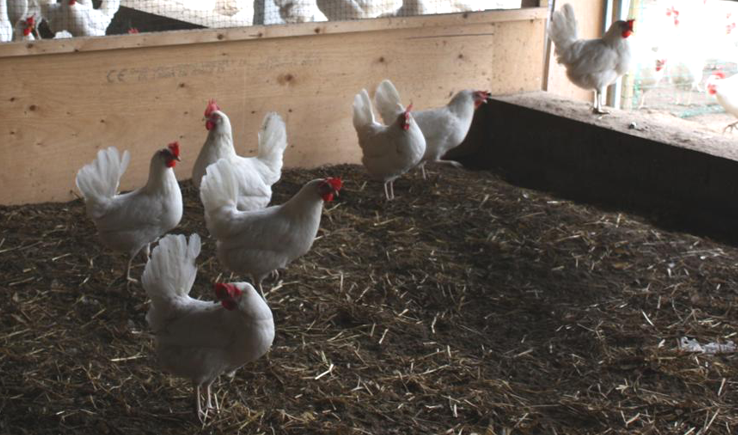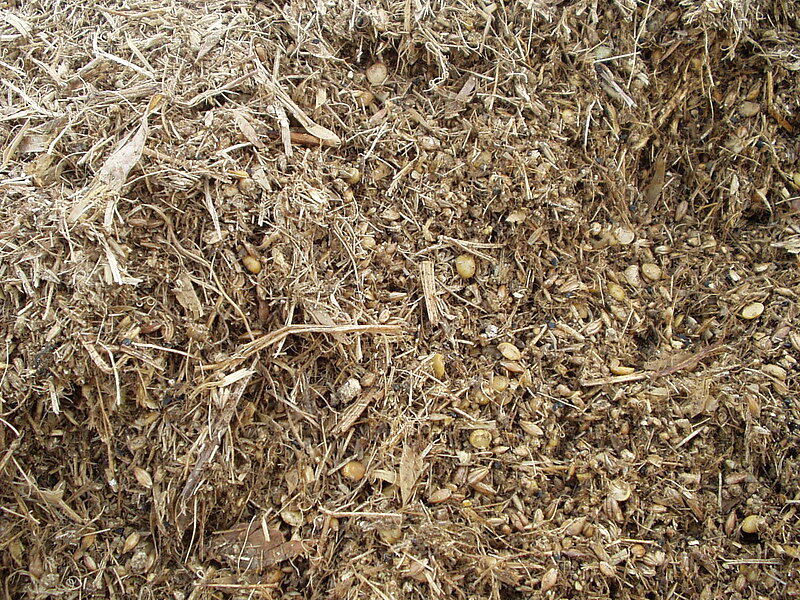Silage feeding for laying hens
Problem
Feeding silage to organic laying hens is practised on a daily basis by many egg producers. Since hens can eat large amounts of silage, it is important to use high-quality silage.
Solution
Different types of silage can be used. However, e.g. grass, clover grass, alfalfa, hemp, horse beans, lupines and sunflower silage often have a higher protein content than e.g. barley/pea or maize silage (whole plant or the cobs only). A chemical analysis of the harvested silage is important in order to estimate the quality.
Benefits
High-quality silage can provide nutrients for the hen and encourage natural foraging behaviour, thus reducing the risk for feather pecking. Growing protein-rich silage helps increase self-sufficiency and improve the crop rotation of the organic poultry farms.
Applicability box
Geographical coverage
Global
Application time
Feeding silage on a daily basis all year. The amount given depends on hen age and silage type.
Period of impact
During the entire laying period.
Equipment
Silage chopper, automatic system (robot) to feed the silage 1-3 times per day in the barn.
Best in
Choice of silage will depend on the soil type and if the land is often dry or waterlogged. The silages should be harvested as whole crops.
Practical Recommendations
- Choose the silage type(s) that provides the best yield and quality, depending on soil type and weather conditions.
- The silage has to be finely chopped.
- Silage generally has to be preserved under proper conditions to optimize the fermentation process.
- Analyse the protein content of the silage and other nutrients if possible.
- Avoid silage with anti-nutritional factors.
- Investing in an automatic feeding system (robot) is recommended for larger flocks to distribute the silage evenly and encourage the hens to eat it.
- Including the chemical content of the silage in the feed formulation could be an advantage, when feeding more than 20 g silage (wet weight) per hen per day.
Further information
Weblinks- This video provides further instructions on feeding silage to layers (in Danish).
- On the website of Økologisk Landsforening 2019, there is an overview of the most important feed materials for self-supply of organic poultry with dry feed and silage. You can download and print listings of data on each crop and information on cultivation, crop rotation, harvesting, storage, nutrient content and nutritional considerations (in Danish).
- Check the Organic Farm Knowledge platform for more practical recommendation on animal husbandry.
About this practice abstract and OK-Net EcoFeed
Publishers:Aarhus University, Department of Agroecology - Agricultural Systems and Sustainability,
DK8830Tjele,
Phone ,
,
http://agro.au.dk/enResearch Institute of Organic Agriculture (FiBL),
CH5070Frick,
Phone +41 62 865 72 72,
info.suisse@fibl.org,
www.fibl.orgIFOAM Organics Europe,
BE1000Brussels,
Phone +32 2 280 12 23,
www.organicseurope.bio,
www.organicseurope.bio
Contact: sanna.steenfeldt@anis.au.dk
Permalink: https://organic-farmknowledge.org/tool/35470
https://orgprints.org/view/projects/OKNetEcoFeed.html
This practice abstract was elaborated in the Organic Knowledge Network on Monogastric Animal Feed project. The project is running from January 2018 to December 2020. The overall aim of OKNet EcoFeed is to help farmers, breeders and the organic feed processing industry in achieving the goal of 100% use of organic and regional feed for monogastrics.
Project website: https://ok-net-ecofeed.eu/
IFOAM Organics Europe (project coordinator), BE; Aarhus University (ICROFS), DK; Organic Research Centre (ORC), UK; Institut Technique de l'Agriculture Biologique (ITAB), FR; Research Institute of Organic Agriculture (FiBL), CH; Bioland, DE; Associazione Italiana perl'Agricoltura Biologica (AIAB), IT; Donau Soja DS, AT; Swedish University of Agricultural Sciences, SE; ECOVALIA, ES; Soil Association, UK.



This project has received funding from the European Union’s Horizon 2020 research and innovation programme under grant agreement No 773911. This communication only reflects the author’s view. The Research Executive Agency is not responsible for any use that may be made of the information provided. The authors and editors do not assume responsibility or liability for any possible factual inaccuracies or damage resulting from the application of the recommendations in this practice abstract

